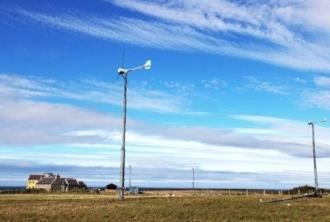By Adam Varenhorst
Although Dectes stem borers are more of an issue in South Dakota sunflower, they can also infest soybean. Most of the reports of Dectes stem borer in soybean originate from the southeast portion of the state. In soybean, Dectes stem borer larvae may cause yield losses due to their feeding activity in the pith of the stem and also due to late-season lodging.
Each infested stem will have only one Dectes larva present, because they are cannibalistic. During the season, the larva will feed in the pith, which will reduce the movement of water and nutrients in the plant. In soybean fields that have large infestations, this activity can lead to seven to 12% yield losses. During the end of season, the larva that is in the stem will move down and girdle the stem approximately two inches above the soil surface. The larva will then create an overwintering cell by closing off the stem where the girdling occurred. This feeding will cause the plant to lodge and ensure that the larva can easily emerge in the spring. Extensive lodging can lead to significant yield losses. Dectes stem borer hosts include soybean, sunflower, cocklebur and giant ragweed.
